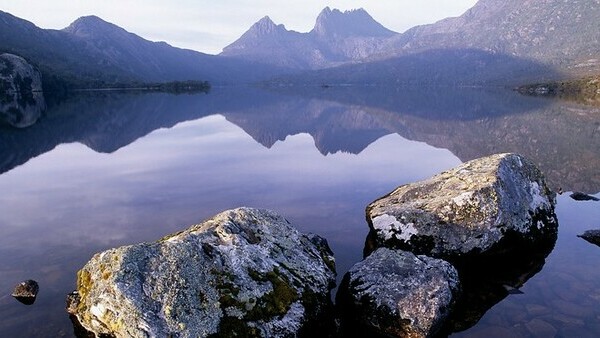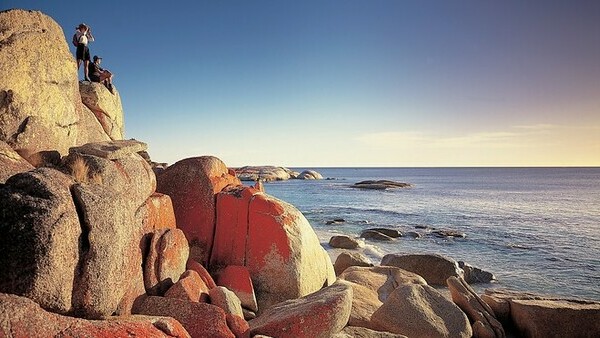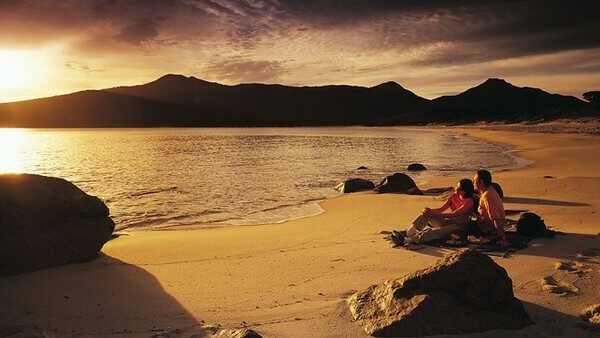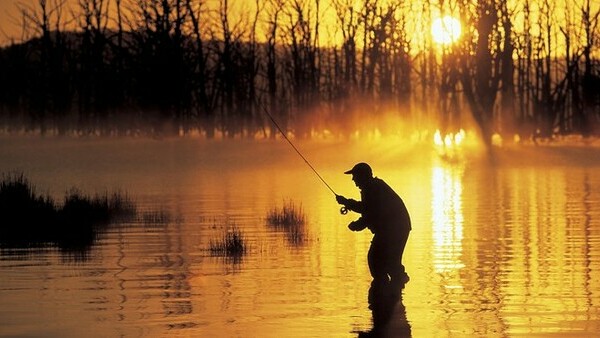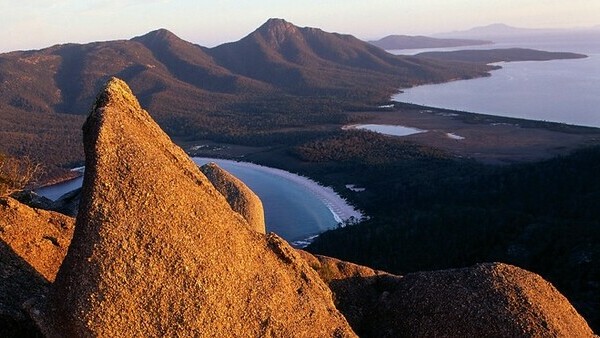Hobart - The Island State
Tasmania, the smallest state in Australia with just over ½ million people remains one of the last places in the country where people can have a true wilderness experience.
The south-west of the island in particular is famous for its rugged mountains, deep forests and alpine moorlands, waterfalls, lakes and fast-flowing rivers. This unspoilt wilderness has been listed by the United Nations as a World Heritage Site. The Cradle Mountain-Lake St Clair National Park takes its two-part name from Cradle Mountain, a strikingly shaped rock formation rising 1545m, and Lake St Clair the deepest glacial lake in Australia being 190m deep. The image of Cradle Mountain reflected in the waters of Lake Dove is an icon of the Tasmanian wilderness. This wild alpine country with its glaciated valleys and lakes is approximately a winding 2 hour drive from the coast and certainly well worth a visit.
The Freycinet Peninsula on Tasmania's east coast is famous for its red granite cliffs and mix of sparkling rich blue seas and secluded beaches, the famous being Wine Glass Bay. The Freycinet National Park is one of Tasmania's scenic highlights.
Affectionately called the “Apple Isle”, Tasmania produces most of Australia's apple exports and it is also known as the “Heritage Island” due to its rich convict and colonial past. Since the 1990's Tasmania has become known as a niche tourist destination, offering clean air and water, remote wilderness, historic sites and gourmet quality foods and distinctive cool-climate wines.
Hobart, Australia's second-oldest capital city was founded in 1804 with probably the most historically intact centre in the country showcasing many beautiful sandstone and brick buildings constructed by convict labour. Hobart has the best collection of early Georgian buildings and Salamanca Place being a great example of this architecture displaying the finest row of early merchant warehouses in Australia. Built between 1835 and 1840, the warehouses are now home to quality art and craft galleries, cafes and restaurants. With its many hills and amazing vistas Hobart harbour is said to rival that of Sydney. There are two popular vantage lookout points to see the city of Hobart, Mt Wellington and Mt Nelson, easily accessed from the city and are well worth a visit.
Port Arthur located on the Tasman Peninsular remains Australia's largest colonial convict settlement. From the 1830s to 1870s it housed hundreds of convicts in extremely primitive conditions running according to the theory that the best way to treat criminals was to keep them apart and in total silence. Many of the buildings have been restored, including the “Model Prison”, built in 1848 and in 2010 the area was declared a World Heritage Sight by UNESCO. This is an interesting and fascinating place to visit and the visitor will come away informed and amazed about Tasmania's and, for that matter Australia's, early convict and colonial history.
Launceston the third oldest city in Australia lies on the banks of the Tamar River, nestled in valleys and surrounded by mountains. It is called the “Garden City” and has a pleasant blend of Georgian, Victorian, Federation and Edwardian architecture. Within walking distance of the city centre you will find Cataract Gorge, a place of landscaped gardens, bush walks and vertical cliffs and deep canyons. A walk can be taken across the Alexandra suspension foot-bridge which has a tendency to swing - safe but adventurous! For those who prefer a calmer experience, take a ride on the longest single chairlift in the world offering spectacular views over the Gorge. A short distance from Launceston are located some of the best wineries in Australia, mostly boutique and family run vineyards.
Tasmania is a driver's heaven. The roads are excellently well maintained, well sign posted and best of all - no traffic. The island is small enough to self-drive in leisure and spending 3 to 5 days in one region the visitor can enjoy all that Tasmania has to offer. Small Island - BIG experience.


